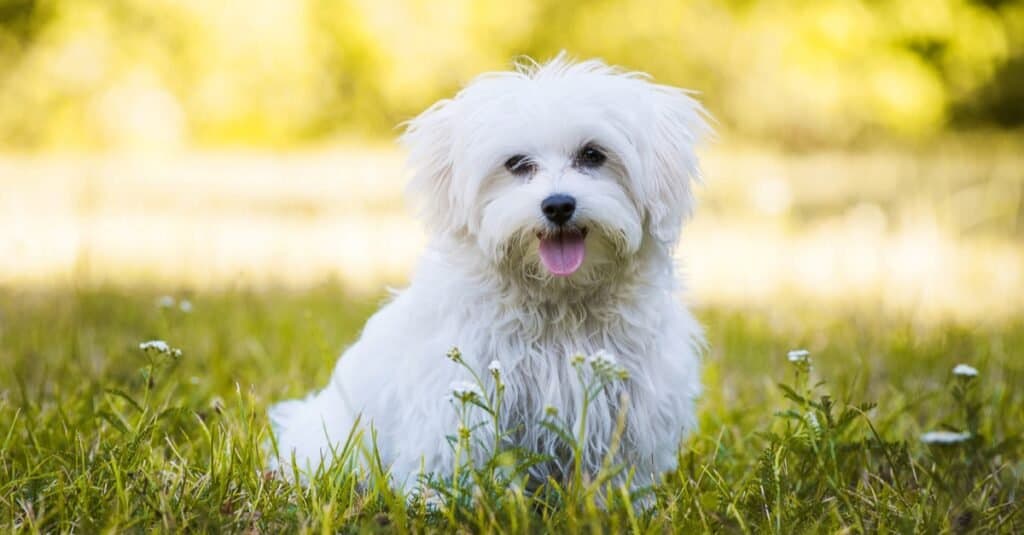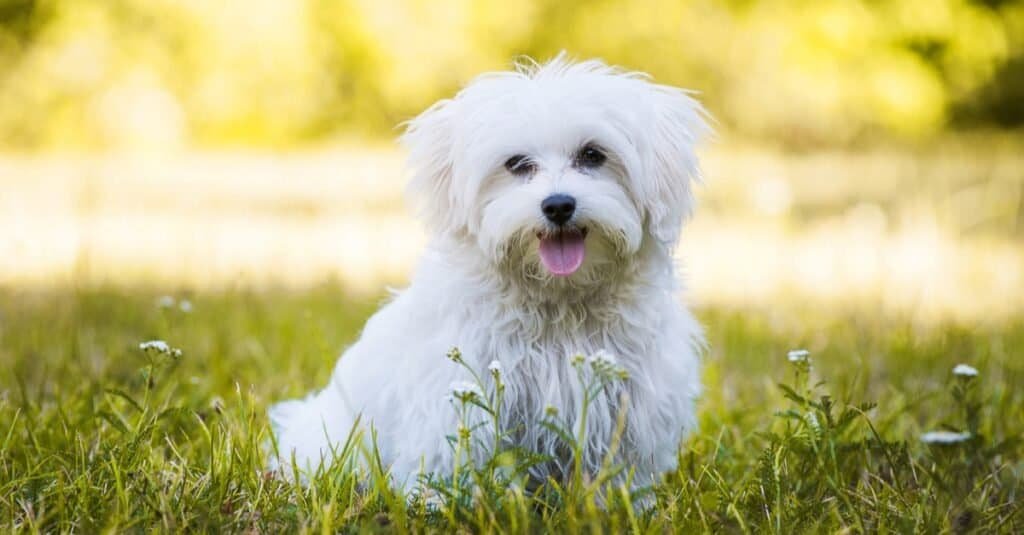Do you know that despite their long, luxurious coats, Maltese dogs actually don’t shed a lot? Surprising, right? Many people assume that dogs with such beautiful hair would leave a trail of fur wherever they go, but that’s not the case with Maltese. Their unique fur type is hypoallergenic and doesn’t shed much, making them an ideal choice for individuals with allergies or those who prefer a low-maintenance pet.
Maltese dogs are known for their gorgeous white coats, but what sets them apart from other breeds is their minimal shedding. This non-shedding characteristic is a result of their hair growth cycle, which differs from other dogs. Instead of continuously growing, Maltese hair reaches a certain length and then stops, akin to human hair. This means that regular grooming and brushing can help prevent matting and keep their coats looking pristine. So, if you’re looking for a hypoallergenic companion who won’t leave your home covered in fur, the Maltese might just be the perfect choice.

Does Maltese Shed a Lot?
Maltese dogs are known for their beautiful, long, and silky white coats. These adorable small dogs have captured the hearts of many pet enthusiasts around the world. However, if you’re considering bringing a Maltese into your home, you may be wondering about their shedding tendencies. In this article, we’ll explore the topic of shedding in Maltese dogs and provide you with all the information you need to know.
Why Maltese Dogs Are Prone to Shedding
Despite having luxurious hair, Maltese dogs are considered a low-shedding breed. This is because their hair, like human hair, grows continuously and does not have a typical fur shedding cycle. Instead, Maltese hair can become trapped in the rest of their coat, leading to tangles and matting if not properly maintained. Beyond this, there are a few reasons why you may notice some hair around your home:
Puppy Coat Transition:
When Maltese puppies are born, they have a softer and shorter coat called the puppy coat. As they grow, their coat will transition into the longer and silkier adult coat. During this transition period, usually between four to twelve months of age, some shedding might occur as the puppy coat is replaced by the adult coat. Regular grooming and proper nutrition during this stage can help minimize shedding.
Hormonal Changes:
Like humans, hormonal changes can affect the hair growth patterns of Maltese dogs. Hormonal shifts, such as those that occur during pregnancy or heat cycles in female dogs, can lead to temporary shedding. Additionally, spaying or neutering a Maltese may also cause some changes in their coat, although it is often minimal and temporary.
Environmental Factors:
Environmental factors can influence the amount of hair a Maltese sheds. For example, exposure to seasonal changes, extreme heat, or dry indoor environments can contribute to some hair loss. Regular grooming, including bathing and moisturizing the skin, can help prevent excessive shedding caused by environmental factors.
How to Manage Shedding in Maltese Dogs
While Maltese dogs are generally considered low-shedding, it is important to establish a grooming routine to keep their coat healthy and reduce the chances of excessive hair around your home. Here are some tips to manage shedding in Maltese dogs:
Regular Brushing:
Brush your Maltese’s coat daily to remove any loose hair and prevent matting. Use a slicker brush or a comb specifically designed for long-haired breeds. Be gentle to avoid tugging or pulling their hair and make it a positive experience by offering treats and praise.
Bathing and Moisturizing:
Give your Maltese regular baths using mild, dog-friendly shampoo. This helps to keep their coat clean and reduces the chances of allergens or irritants building up on their skin. After bathing, use a moisturizer or a leave-in conditioner to keep their coat soft, silky, and less prone to tangling and shedding.
Professional Grooming:
Schedule regular appointments with a professional groomer who is experienced in handling long-haired breeds. They can trim the hair around the eyes, ears, and paws, as well as provide a professional haircut that reduces the maintenance required for the coat.
Healthy Diet:
Ensure your Maltese is receiving a balanced and nutritious diet. Proper nutrition plays a significant role in maintaining a healthy coat. Consult with your veterinarian to determine the best diet for your Maltese, taking into account their age, activity level, and any specific dietary needs they may have.
Regular Check-ups:
Schedule regular visits to the veterinarian to monitor the overall health of your Maltese. Conditions such as allergies or skin infections can contribute to excessive shedding. By addressing any underlying health issues, you can help maintain a healthy coat for your furry friend.
Avoid Overheating:
Maltese dogs are sensitive to heat, and excessive heat exposure can lead to hair loss. Keep them in a cool and well-ventilated environment, especially during hot summer months. Avoid subjecting your Maltese to prolonged sun exposure, and consider using dog-safe sunscreen to protect their skin.
Use Protective Clothing:
If your Maltese is prone to shedding and you want to minimize hair on your furniture or clothing, consider using protective clothing items such as doggy onesies or pet diapers. These can help contain the loose hair and prevent it from spreading around the house.
Are There Hypoallergenic Benefits?
Many people with allergies are attracted to Maltese dogs due to their reputation as a hypoallergenic breed. While no dog is completely hypoallergenic, Maltese dogs are known to produce fewer allergenic particles such as dander and saliva, which are common triggers for allergies. Their low-shedding coat also helps reduce the amount of hair they leave behind, further minimizing potential allergic reactions. However, it’s important to note that individual allergies can vary, and it is recommended to spend time with a Maltese before making a decision, especially if you or a family member have severe allergies.
Conclusion
Maltese dogs are lovable companions known for their stunning white coats. While they are considered a low-shedding breed, some minimal hair loss may occur due to factors such as transitioning from the puppy coat, hormonal changes, and environmental influences. By establishing a regular grooming routine and paying attention to their overall health and well-being, you can help manage shedding in your Maltese and maintain their beautiful coat. Remember, a healthy and happy Maltese can bring immeasurable joy to your life.
Key Takeaways – Does Maltese Shed a Lot?
Readability: Easy for a 13-year-old kid
- Maltese dogs have hair instead of fur, making them a great choice for those with allergies.
- While Maltese dogs do shed, it is minimal compared to other breeds.
- Regular grooming and brushing can help control shedding and keep your Maltese’s coat looking beautiful.
- Maltese shed more during seasonal changes and may require extra grooming during those times.
- Keeping your Maltese on a healthy diet can also help reduce shedding.
Frequently Asked Questions
Are you wondering if a Maltese dog sheds a lot? Check out these common queries and get all the answers you need about shedding in Maltese dogs.
Do Maltese dogs shed their fur?
Yes, Maltese dogs do shed, but they are considered to be a low-shedding breed. Their shed hair may not be as noticeable as in other breeds, but it is still present. Maltese have a single-layered coat that grows continuously, so some shedding is inevitable. However, they shed considerably less compared to breeds with a double-coated fur. Regular grooming can help manage their shedding and keep their coat healthy and beautiful.
It’s important to note that individual variation exists in shedding patterns among Maltese dogs. Some may shed more than others depending on factors like genetics, health, and the care they receive. Overall, though, Maltese dogs are known for being a great choice for individuals with allergies or those who prefer a dog with minimal shedding.
How can I manage the shedding in my Maltese dog?
To manage shedding in your Maltese dog, regular grooming is key. Brushing your Maltese’s coat daily helps remove loose hair and prevents it from spreading all over your home. A slicker brush or a comb with wide teeth is recommended for their long, silky hair. Additionally, consider scheduling regular appointments with a professional groomer to maintain the health and appearance of your Maltese’s coat.
Keeping your Maltese well-nourished and providing a balanced diet is also essential. A proper diet with essential nutrients can promote healthy hair growth and minimize excessive shedding. Adequate hydration is equally important, as it supports skin and coat health. Also, remember to consult your veterinarian for personalized grooming and shedding management advice based on your Maltese’s specific needs.
Is there a specific time of the year when Maltese dogs shed more?
No, Maltese dogs do not typically have a specific shedding season like some other breeds. Instead, they tend to have a continuous and slow rate of shedding throughout the year. However, it is important to note that some Maltese dogs may experience a seasonal shed, especially during the spring or fall. During these periods, they might shed their winter coat to make way for a lighter summer coat or vice versa.
If you notice an increased shedding pattern in your Maltese during these seasonal transitions, providing extra grooming attention during those times can help manage the shedding and keep their coat in good condition.
How can I minimize allergens caused by shedding in my Maltese?
While no dog can be completely hypoallergenic, Maltese dogs are often considered more hypoallergenic compared to other breeds because they shed less and produce fewer allergenic dander particles. To minimize allergens caused by shedding in your Maltese, there are a few steps you can take.
Regular grooming and bathing are essential to remove loose hairs and dander from your dog’s coat. This helps reduce the amount of allergens that may trigger allergic reactions. Vacuuming your home frequently and using air purifiers can also help reduce allergens in your living space. In addition, maintaining good ventilation and keeping your Maltese away from areas you spend a lot of time in, such as your bed or couch, can further minimize allergen exposure.
Can supplements reduce shedding in Maltese dogs?
While supplements can support overall coat health, there isn’t a specific supplement that can eliminate shedding in Maltese dogs. A balanced diet that includes essential nutrients like omega-3 fatty acids can promote healthy skin and coat, which may help minimize shedding to some extent. However, it’s important to remember that shedding is a natural process for dogs and cannot be completely eliminated.
If you have concerns about your Maltese’s shedding or overall coat health, it’s best to consult with a veterinarian. They can assess your dog’s specific needs and recommend appropriate supplements, if necessary, to support their overall well-being.
Maltese DO Shed
Summary
So, to sum it up, Maltese dogs do shed, but not a lot. Their long, silky hair tends to stay on their body rather than fall out. They are considered a hypoallergenic breed, making them a good choice for people with allergies.
If you’re looking for a dog that won’t leave hair all over your house, a Maltese might be a great option. Just keep in mind that their beautiful coat will require regular grooming to keep it looking its best. Overall, the Maltese is a low-shedding breed with a lot of love to give.
